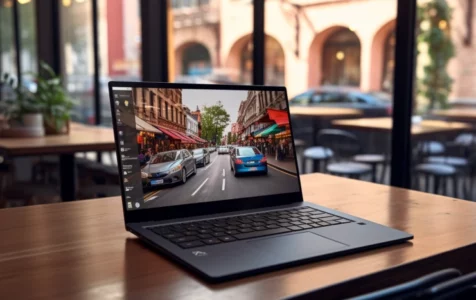VLC , an enduring media player for Windows, remains popular on PCs and mobile devices, including Windows 10/11, even with the presence of Windows Media Player.
There are a few VLC users who truly know what they can achieve in VLC through launching it via the Command line. The VLC graphical user interface (GUI) offers some of the highest capabilities a media player can have. However, running the program through the Command line unlocks a host of features you wouldn’t have imagined. In this guide, we will let you in on those hidden treasures of VLC and show you how easily they can be unlocked.
If you didn’t know, VLC is more than just a regular media as it allows users to convert video formats, download video subtitles, as well as, install plugins to mention a few features. The GUI that we’re all accustomed to is indeed convenient for daily use as it provides a lot of visual guides for easy maneuver.
The command-line interface is not as convenient as the graphical user interface version of VLC. It doesn’t have a mouse cursor or menu buttons to press. Actions should be typed out to give input to the software to launch or do other things. Since it is more convenient to maneuver, using the mouse and other buttons, why bother using this seemingly dull VLC command-line interface?
Expert Tip: For smoother PC performance, consider using a PC optimization tool. It handles junk files, incorrect settings, and harmful apps. Make sure it's right for your system, and always check the EULA and Privacy Policy.
Special offer. About Outbyte, uninstall instructions, EULA, Privacy Policy.
For starters, the command line VLC version unlocks a lot of features that are not available on the GUI. The visual interface is limited despite new features being added regularly to the player. Moreover, the GUI doesn’t offer all configurations, modifications, as well as other actions that are available in the command-line interface.
Running VLC Using Command Prompt
If you’re wondering how you can run VLC using Command prompt, here is how:
- If you don’t have VLC installed already in your system, download and install its setup file before launching it via Command Prompt.
- Now, in the Taskbar search field, type “cmd” (no quotes) and hit the Enter key.
- Look for Command Prompt in the results and right-click on it before selecting Run as Administrator.
- Go to the VLC installation folder. The default path for the VLC folder is:
C:\Program Files\VideoLAN\VLC - If you installed VLC in another drive, simply replace letter C with the actual drive letter. Copy the path and insert it in the Command Prompt field.
- Copy the exact file path of the media file you wish to play. You can simply do so by accessing file Properties and then copying the path to the clipboard.
- Paste the media file path as the next command line as follows;
vlc file-path - If the file you wish to play is on your Desktop, the command line should be as follows:
vlc C:\Users\user-name\Desktop\Example.mp4 - Now, VLC media will launch and begin to play the select video.
Making VLC Work on Command Prompt
Thus, if you’re keen on using the command line version, you can make it work anywhere. The initial step is to locate the full VLC directory location. It should be something like this, if you select Windows installer:
C:\Program Files\VideoLAN\VLC\
Once you have done that, follow the steps below:
- Access the Properties of your system and then click on Advanced system settings.
- Select System Properties before choosing the Advanced tab. Now, click on Environment Variables.
- Scroll down under System Variables to find an entry labelled Path.
- Click to highlight it and then select the Edit option.
- Now, in the Variable value option, add the following path to it:
C:\Program Files\VideoLAN\VLC\ - Make sure you don’t miss the semi-colon shown in the path above.
- Press OK once you have added the path on all the dialogs to save and close them.
- Launch the elevated CMD using these steps to test if the configurations have taken effect.
If the whole process was correctly applied, you shouldn’t be having problems opening the player via the CMD and playing media files automatically. You can also control video speed, convert media file formats, as well as remotely play content.
Once you’ve configured VLC to run using Command Prompt, you can view the help file to understand all the possible features available. You can do so by inserting the command line below followed by the Enter key:
c:\>vlc –help
This action will display all options that are available for use. It is also the best way of learning new tricks with VLC Command Prompt interface. The list of features available are then saved as vlc-help.txt under c:\users\<username>\ location.
You can play YouTube videos on VLC Command Prompt interface. What makes this feature stand out is that you will be able to watch favorite content in full-screen mode with no ads or other interruptions.
To play a YouTube video using VLC Command prompt interface, start by fetching the URL of the media content online and then paste it as a command line as shown below:
vlc https://youtube-video-url
This will prompt the VLC app to start playing the video in command prompt mode. Since you don’t want any disruptions, now you must disable the widget to enhance your viewing experience. To do so, insert another command line shown below followed by the Enter key:
vlc https://online-video-url –fullscreen
Now, the YouTube video can be viewed without widgets, ads or any other interferences. As you can see, this is a useful VLC trick that few know about. It is useful as it offers effective playback controls, allows conversion of audio files, as well as use in-depth video editor features.
